What are these orange bugs on my plants? You are reading this article to get answers. I listed the most common orange pests on plants, including pictures for you.
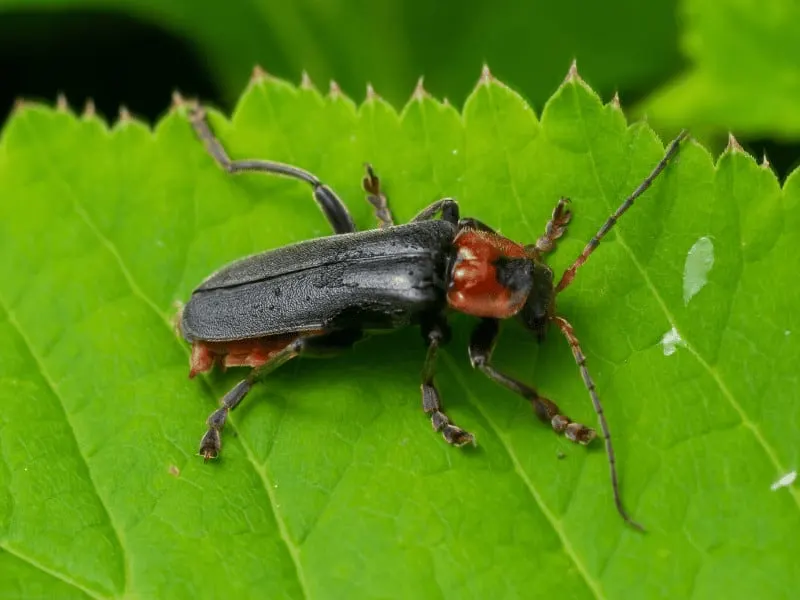
What are These Orange Bugs on my Plants?
These orange bugs on your plants are ladybugs or milkweed leaf beetles that closely resemble them. They could also be the orange assassin bugs or the milkweed assassin bug. Boxelder bugs are also black and orange and can be a pest when spawning in the spring. The primarily orange bug and the only destructive bug in this group is the oleander aphid.
Takeaways
| Bug Name | Scientific Name | Categorization | Characteristics |
|---|---|---|---|
| Leaf-Footed Bug | Spartocera fusca | Harmful | Nymphs are orange, adults are stinkbug-shaped, brown or greyish, feed on plants. |
| Oleander Aphid | Aphis nerii Boyer de Fonscolombe | Harmful | Harmful pest that sucks the life out of plants, particularly harmful to oleander plants. |
| Ladybugs | Coccinella septempunctata | Beneficial | Voracious eaters of aphids and other harmful insects, organic method of pest control. |
| Milkweed Beetle | Tetraopes tetrophthalmus | Harmful | Resembles ladybugs, drawn to milkweed plants, can be harmful to milkweed plants, but benefit the ecosystem. |
| Australian Ladybug | Cryptolaemus montrouzieri | Beneficial | Helpful against thrips, supports natural pest control. |
Table of Contents
Orange Bugs on Plants
Many orange bugs also have stripes and dots, a strikingly noticeable contrast against the green of your plants.
Some are harmful, while others can help you keep the nasty bugs under control.
Like the Spartocera fusca, some bugs are orange in early larval stages and gain black accents as they age.
Keep an eye on your plants and learn what these orange bugs are and whether they are good or bad for your plants.
Oleander Aphid – Aphis nerii Boyer de Fonscolombe [Harmful]
The oleander aphid, scientific name Aphis nerii Boyer de Fonscolombe, according to the University of Florida, is a pest that is harmful to your plants. An outbreak of oleander aphids will suck the life out of your plant.
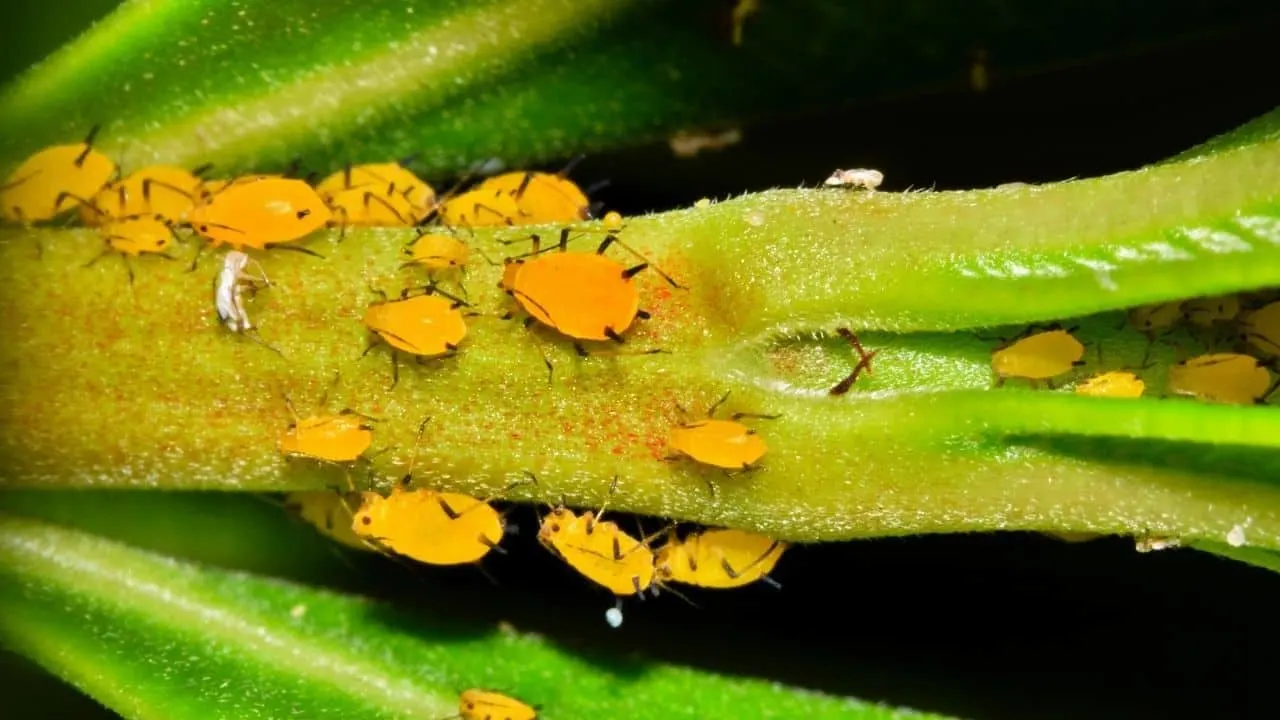
Aphids like milkweed. They will eat other plants, too.
Since milkweed is a centerpiece of butterfly gardens, using poison on these little pests is often not an option. You don’t want to poison your butterflies and other beneficial insects.
So, many people will rub them off the leaves of their plants, while others use the pressure of their water hose to wash them away and be careful not to break any branches.
For heavy infestations, spraying isopropyl alcohol will kill orange aphids immediately. However, it will also destroy your butterflies.
So, if you use this method, rinse the alcohol from your plants in just a few minutes after you apply this mixture.

Ladybugs – Coccinella septempunctata [Beneficial]
Ladybugs are your best defense against aphids in your butterfly or vegetable garden because they are voracious eaters. It is also an organic way to combat pests.
Ladybugs and milkweed assassin bugs eat aphids, alfalfa weevils, Colorado potato beetles, grape rootworms, chinch bugs, asparagus beetle larvae, spider mites, and whiteflies.
Bugs for Bugs says that some ladybug species, such as the Australian ladybug, Cryptolaemus montrouzieri are helpful against thrips.
If you can create an environment that supports these insects, they can help you keep your garden free of harmful pests.
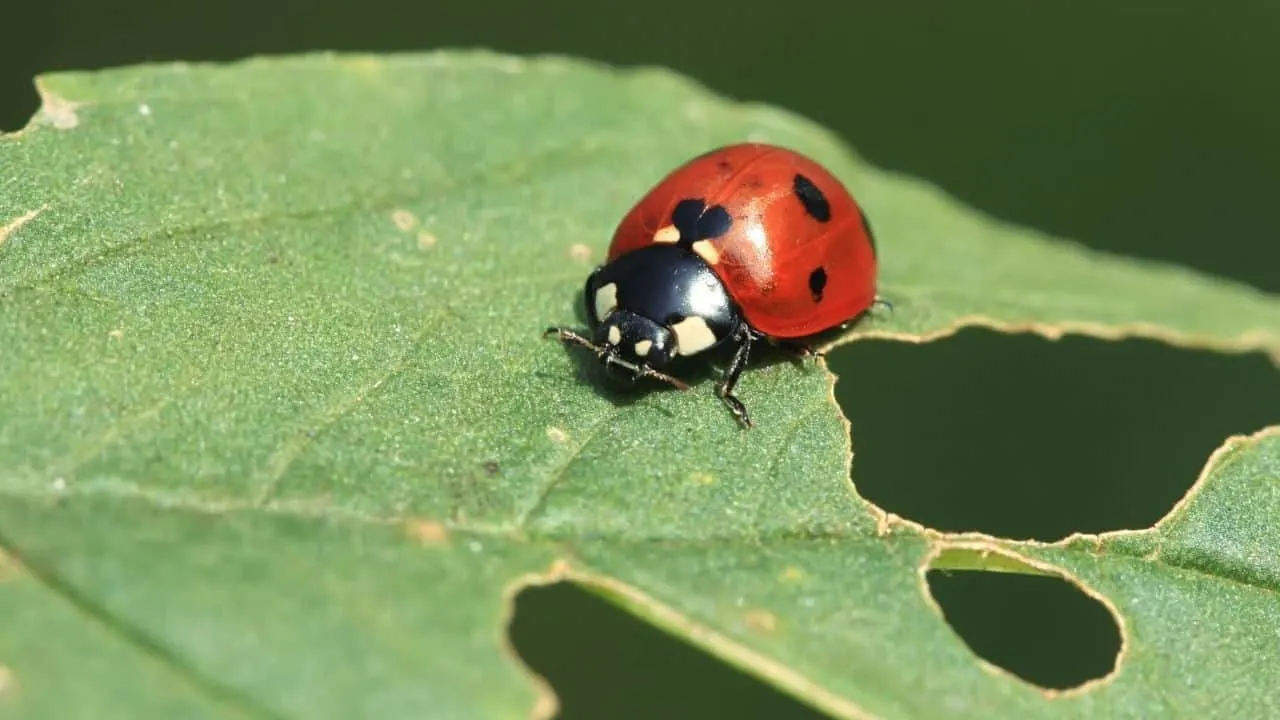
Leaf-footed bug – Spartocera fusca [Harmful]
The Spartocera fusca, also known as the leaf-footed bug is orange in the nymph stage. Adults may still have some orange hues, but they are shaped like a stinkbug and brown or greyish when grown. The leaf-footed bug is eating plants.
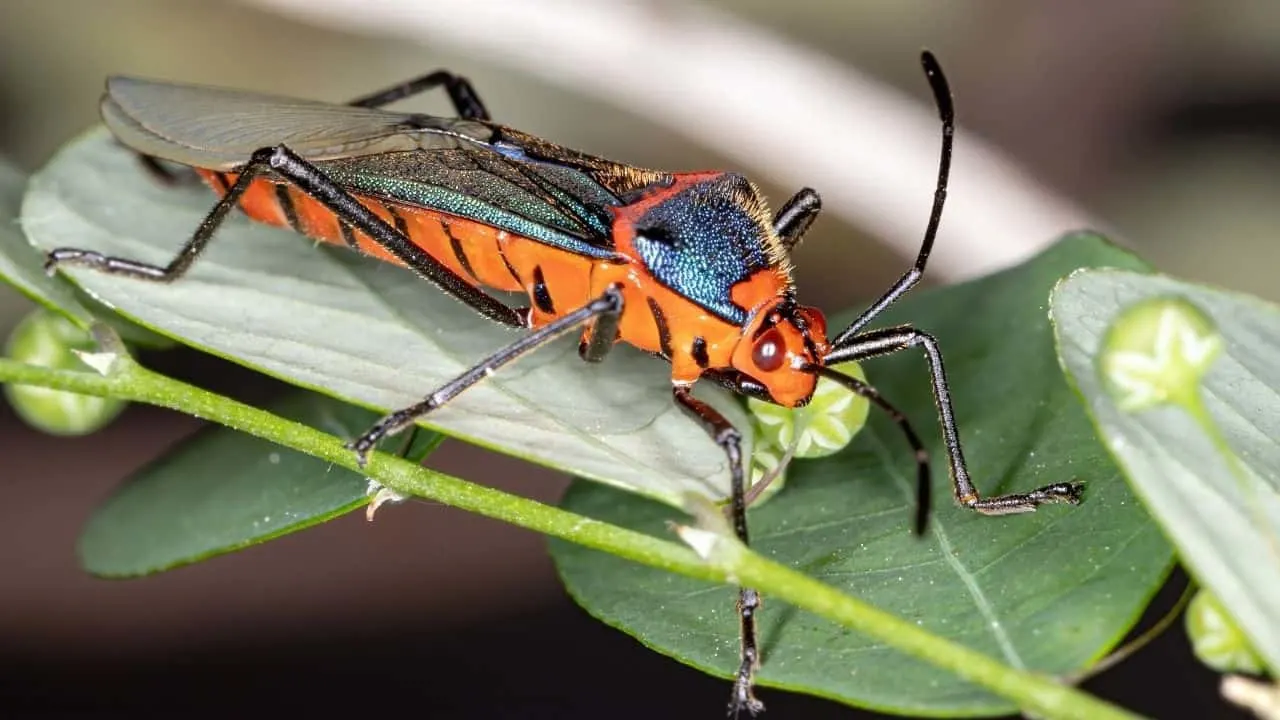
Milkweed beetle (Tetraopes tetrophthalmus) [Harmful]
The milkweed beetle, which closely resembles the Ladybug, is not a beneficial insect. They are drawn to milkweed plants. You may want to combat adult Milkeweed beetles, but the little ones are food for others in the chain and benefit the ecosystem.
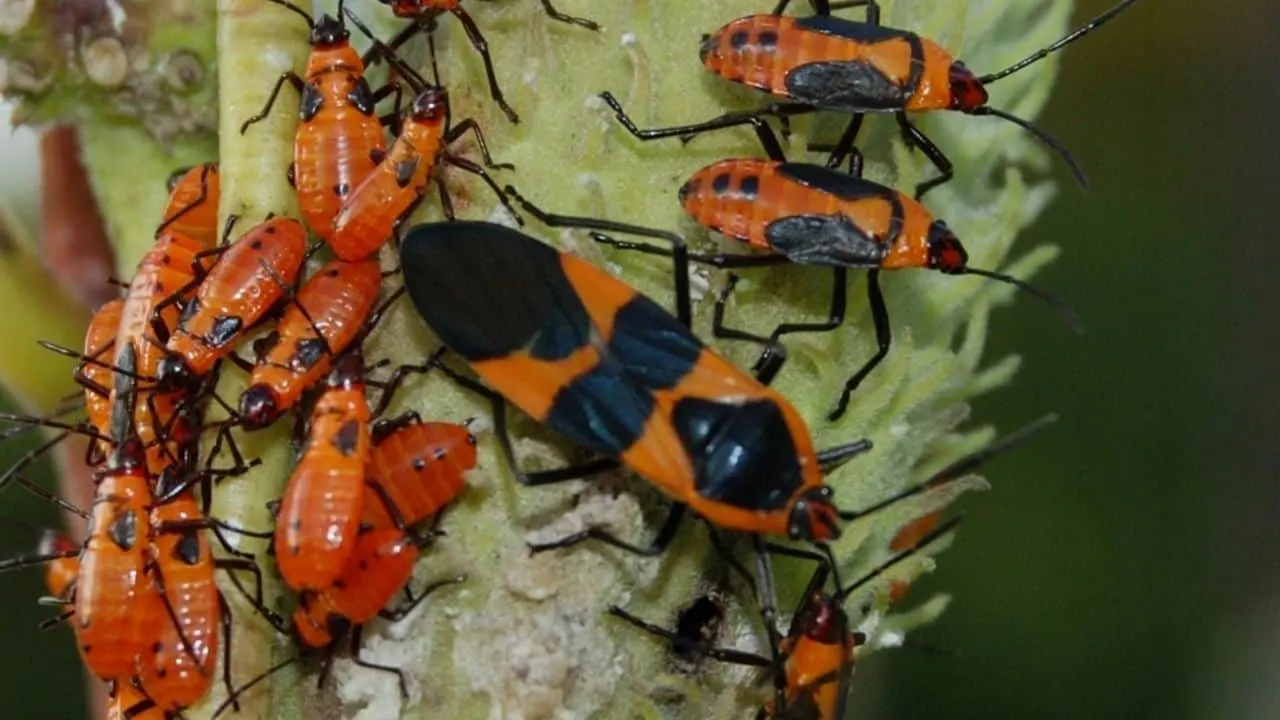
FAQ
Are orange bugs poisonous to me?
Some people suffer allergic reactions to ladybug presence. This is because they swarm in spring like elder bugs and termites. So, if any of them get into your home, you could have an allergic reaction to their presence.
Are orange bugs poisonous to other bugs and animals?
Ladybugs are because they have a toxin that is harmful to insects that eat them. The poison could make your pet sick if they ate living or dead ladybugs.
What do you do for an outbreak of boxed elder bugs?
Sealing your windows and doors well is The best way to ensure they don’t interrupt your spring. Since boxelder trees are what attracts them, keep them trimmed. They can be removed from plants like aphids with soapy water, the strong stream of a water hose, or vinegar, or you can trap them.
Conclusion
There are several orange bugs in the garden. Most are predators and will eat harmful insects and leave your plants alone. Watch out for the Oleander aphid, the Leaf-footed bug and the Milkeweed beetles. If that is the answer to “What are these orange Bugs on my Plants?”, you better take action.

Daniel has been a plant enthusiast for over 20 years. He owns hundreds of houseplants and prepares for the chili growing seasons yearly with great anticipation. His favorite plants are plant species in the Araceae family, such as Monstera, Philodendron, and Anthurium. He also loves gardening and is growing hot peppers, tomatoes, and many more vegetables.


